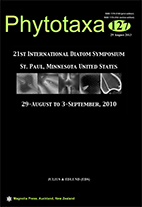Abstract
Lake Qarun in the Egyptian Faiyum Depression is the shrunken remnant of a much larger lake. To investigate the sedimentary history of the former lake, several continuous lacustrine sediment cores were collected from now terrestrial locations within the basin. The suitability of these sediments for reconstructing past environmental changes was first assessed by describing the gross stratigraphies of three core sequences and secondly by evaluating taxonomic issues concerning sedimentary diatom species within the genus, Stephanodiscus Ehr. The stratigraphic descriptions show basal sections comprised of either coarse sand or weathered Ecocene limestone overlain by lacustrine sediments. Lower sections of the lacustrine sediments are diatom marls, and, in the two lakeside cores, these are laminated. These sections indicate that the lake initially formed by rapid in filling to a considerable depth with freshwater and the diatom-rich marls containing abundant Stephanodiscus and Aulacoseira Thwaites species. A new species and variety of Stephanodiscus, S. neoaegypticus and S. neoaegypticus var. fekrii, are described from the marl section in one core. Another species, S. galileenis Håkansson & Erhlich, was also present and is re-evaluated with reference to the published description. The importance of establishing a sound taxonomic foundation for palaeolimnological studies of Lake Qarun is stressed.

